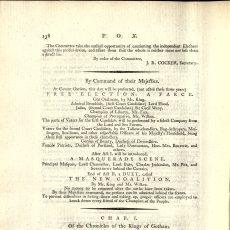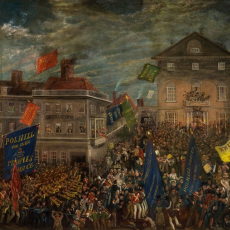Aug
1830
bedford
Contested
GENERAL ELECTION
Poll book data from:
Citation: A copy of the poll… (Bedford: C. B. Merry, 1830)
Source: John Sims (ed.), A Handlist of British Parliamentary Poll Books (Leicester, 1984); Jeremy Gibson and Colin Rogers (eds.), Poll Books, 1696–1872: A Directory of Holdings in Great Britain (4th edn., Bury, 2008).
Timeline & Key Statistics
Contexts & Remarks
Some uncertain/illegible sections.
Dates: Monday 2 Aug.-Thursday 12 Aug. 1830.
Poll book reference: A copy of the poll... (Bedford: C. B. Merry, 1830).
History of Parliament estimates that Bedford had an electorate of about 1,100 in c.1830, of which 907 voted (82 per cent turnout).
1830 general election triggered by the death of George IV.
Candidates: William Henry Whitbread (Whig), Frederick Polhill (Independent), and Lord John Russell (Whig).
William Whitbread a returning candidate, first elected for Bedford in 1818, was the son of Samuel Whitbread II, MP for Bedford, 1790-1815.
Frederick Polhill, a wealthy local landowner, portrayed himself as an independent aiming to unseat the duke of Bedford's candidate. He specifically canvassed the town's deprived shopkeepers and tradesmen, relying on bribery and beer.
Lord John Russell, third son of the 6th duke of Bedford, replaced his brother Lord George William Russell, who had been notably absent in his constituency from 1826. Lord John's family connections, attacks on Dissenters and support for Catholic Emancipation made him an unpopular candidate.
The election was rough and riotous, and lasted for the full eight days. The close result of the poll (Whitbread 515, Polhill 491, Russell 490) led to a scrutiny, but the result was upheld. The duke of Bedford wrote to his son, Lord George: Polhill's triumph was brought about by anti-aristocratical, anti-Russell, and pro-corruption, pro-eating and drinking, and pro-Tory feelings. All these combined have got Mr. Polhill for them, and much good may he do them'.
Cultural Artefacts
Poll Book
Below is a digitised version of the poll book for this election:







